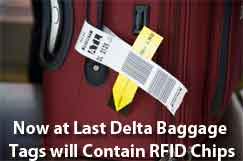| |
|
| |
|
 |
Supply
Chain by the Numbers |
| |
|
| |
- May 12, 2016 -
|
| |
|
| |
|
| |
|
| |
Amazon's Q1 Logistics Costs Remain Very High; Costs of Ocean Containers have Plummeted On Demand, Steel; Continued Legal Assault of Drayage Driver Classification; Delta First to RFID Tag Luggage |
| |
|
| |
| |
| |
|
799
|
|
That is the number of complaints that have been filed since 2011 against port-trucking companies with the California Labor Commissioner's Office, alleging drivers were misclassified as independent contractors and denied the wages and benefits afforded to full-time employees. This issue, which never seems to go away, is roiling the drayage industry, causing several trucking firms to go under due to the legal expense of fighting the claims or the settlements ordered paid to drivers by regulatory agencies there. A total of more than $35 million has been awarded to drivers in those cases, according to the Labor Commissioner's Office. Over a dozen class-action lawsuits alleging mis-classification at the port-trucking companies are pending in California courts. And the National Labor Relations Board recently filed a complaint against a California drayage company that is one of the first to include the allegation that drivers' misclassification as independent contractors violates the National Labor Relations Act. While smaller truckers are most affected, giant Hub Group recently closed its Southern California ports operation, a little over a year after converting the local fleet from independent contractors to full-time drivers, citing “unsustainable” costs. |
| |
| |
|
| |
| |
$50 Million |
 |
That's about how much Delta is investing in a new RFID tracking system for luggage, in a move that could just about end lost baggage at the airline. Of course, the idea for using RFID to track luggage has been around for about 20 years, but Delta is set to become the first US airline to put the technology in place, as the air industry is at long last profitable enough to make such investments. Delta says it has already deployed 4,600 RFID readers and 3,800 RFID bag tag printers, and will have readers on the belt mechanism that moves luggage into the belly of the plane that will scan each bag tag and verify that it has been loaded onto the correct aircraft. Thus far, the RFID system has achieved a 99.9% success rate in terms of proper routing and loading, Delta says. Lost luggage while travelling - could it soon really be almost a thing of that past? "Perfect logistics" is coming, we continue to say. |
| |
| |
|
|
|
| |
 |
 |
| |
|
|
| |